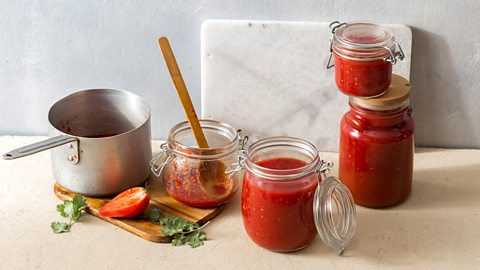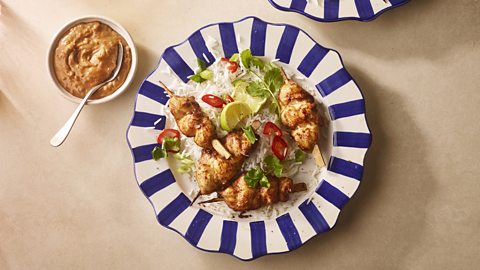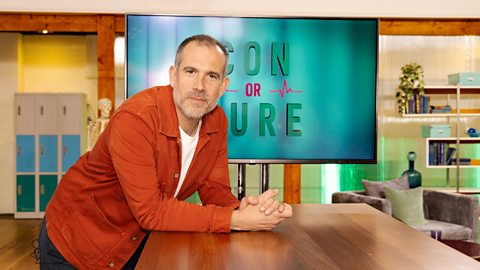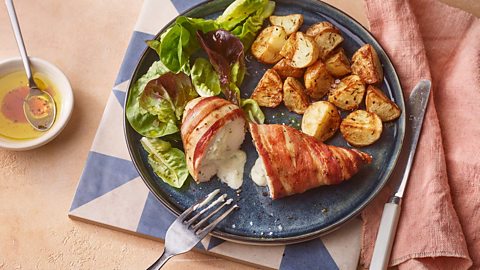How to make hitting the recommended fluid intake easy
If you often forget to drink enough throughout the day, you’ll be pleased to know that glugging glasses of water isn’t the only way to stay hydrated.
By Kate Jones
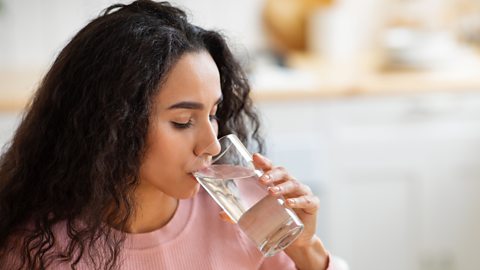
The human body is around 60% water. Not only does this fluid prevent us from overheating, it also lubricates tissues and joints and is important for digestion – among other functions. So, it’s vital that the water we’re constantly losing through breathing, sweating and waste removal is replaced.
The NHS recommends we drink six to eight cups of fluid a day (though the amount varies depending on your circumstances).
Not getting enough water leads to dehydration, whose symptoms range from headaches and fatigue to having a dry mouth and even experiencing issues with vision.
Yet, making sure we reach our fluid quota isn’t something we all focus on. In fact, a YouGov study revealed 31% people pay little or no attention to the amount of water they consume.
Of course, it’s not only water that can keep you hydrated – all kinds of drinks contribute to maintaining your fluid levels, including tea and coffee. But did you know you can also reach your fluid target by eating certain foods?
“Lots of foods have a very high fluid content,” points out Bridget Benelam, a nutrition scientist and nutrition communications manager at the British Nutrition Foundation.
Clare Thornton-Wood, registered dietitian and British Dietetic Association spokesperson, says a rough rule for a healthy daily fluid intake is 1.6 litres for women and 2 litres for men. Around a quarter of that is expected to be derived from what you eat rather than what you drink.
Handy to remember if you always forget your water bottle or often neglect to refill your glass.
Related stories
Foods with high water content
Data included in a 2010 study on hydration, water and health says that there are several foods with a water content of between 90% and 99%, including strawberries, watermelon, cabbage, lettuce, celery and cooked squash.
Apples, carrots, cooked broccoli and pears all have a water content ranging from 80% to 89%, as do oranges, grapes and pineapple. Another food in this category, perhaps surprisingly, is yoghurt.
Lemon and blueberry yoghurt pots
A low-fat dessert very similar to an Eton mess which will contribute to your fluid intake
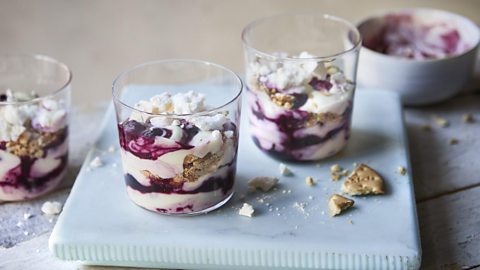
Meanwhile, foods with a water content of 70% to 79% are avocados, bananas, baked potato and cooked corn, along with prawns, cottage cheese and ricotta. Chicken breast, salmon, pasta, legumes and ice cream are between 60% and 69% water. Even pizza is almost half water.
Recipes using water-rich ingredients
The virtues of water-rich foods
When it comes to finding foods with high water content, fruits and vegetables in general are a safe bet. Thornton-Wood notes that everything in this category contains water, with fruits often carrying particularly generous amounts.
“Think about the recommendation to eat at least five portions [of fruit and vegetables] a day. If you manage to incorporate that into your diet, you will be getting fluid there.”
It’s also worth considering typical liquid-based recipes like soups, casseroles and smoothies.
“If you had a smoothie for breakfast, some soup for lunch and at dinner you had meat or bean casserole followed by a yoghurt, you would get, as a rough figure, at least 200 millilitres of fluid from each of those meals.”
That totals 600 millilitres, which could be around a third of your daily requirement.
Vegan noodle soup
This soup is quick to make and rich in vitamins, minerals and water
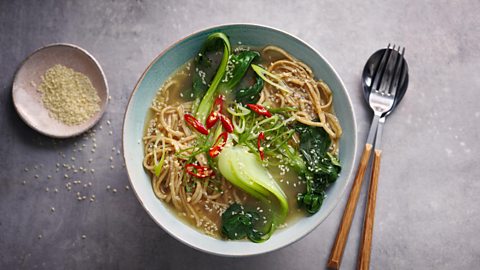
“Water-rich foods tend to often be the healthier foods,” says Benelam, giving the example of tinned tomatoes, which are nutrient-rich while also containing plenty of liquid. “You can make loads of different things with them, from pasta sauce to curry and soup. Those dishes won’t only have a high water content, but also be a good source of nutrients like vitamin C and contain lycopene.”
Tinned tomato recipes to try
Points of caution
Thornton-Wood notes that ingredients with a very high fluid content can be lower in calories, so it’s worth thinking about what they’re being eaten with.
“That’s not necessarily always the case but, for instance, gazpacho or tomato and courgette soup are very watery, so the number of calories in them is very low,” she says. “If you’re somebody that needs to keep their calories up or is not looking to lose any weight, you need to bear in mind that if you’re having a meal like one of those, with very high water content, you might want to add to them to boost the calories.”
Some dishes that are especially high in fluid may not just be lower in calories, but in some nutrients too, warns Benelam.
“If you make your diet very rich in water, it could become less nutritious than what you might need, especially if you’re somebody with high nutrient requirements. You probably wouldn’t want little children, for example, to get lots and lots of water from their food because they have small stomachs and high nutrient needs. So if they tend to eat a lot of soups, salads and vegetables, you’ll want to give them other, more nutrient-rich foods alongside.”
It’s a fine balance to consider, seeing as children (as well as older adults) have a higher risk of dehydration.
Also important to remember is that your food will lose some fluid when you cook it, depending on the method you use. Water evaporates as steam, so if you’re trying to lock in that water content, keep the lid on pots and pans, or perhaps use something like a slow cooker or pressure cooker, which tend to stop liquid from escaping.
Fennel and butternut squash stew with cannellini beans
This stew is packed with nutrients and water – and it’s delicious too
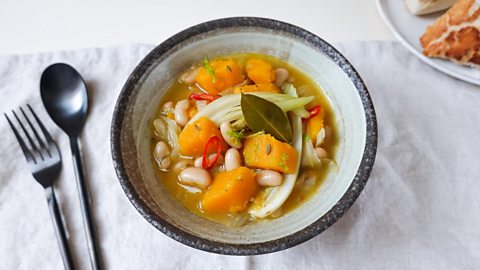
Benelam is keen to point out, too, that the digestive process takes longer with eating than it does with drinking, meaning that it will likely take more time for water that has come from food to get into your system.
Food will never make the need to drink redundant, then – especially if you’re nearing dehydration. Getting straight up water inside you is the most efficient way to hydrate quickly.
Still, Thornton-Wood says that if you follow a typical healthy diet, you’ll probably hit your daily fluid goals without much effort.
“If you aim to drink between a litre and a litre-and-a-half of fluid a day – about seven or eight mugfuls – and you eat a balanced diet which includes fruit and vegetables, you’re likely to hit your target.”
Originally published January 2024
